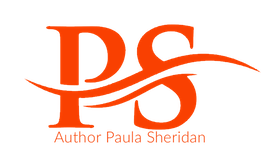I got a fantastic question about novel-to-TV adaptations that connects perfectly with something I've been developing - and I think you'll find both the answer and the broader implications fascinating.
The Magic Numbers for Novel Adaptation
When you're converting a novel series to television, you're typically looking at 15,000-25,000 words per hour-long episode. But here's where it gets interesting - this isn't just a numbers game.
The real challenge isn't cramming X words into Y minutes. It's about identifying which 15,000 words contain the most universe-expanding potential.
Think about it: Game of Thrones didn't just adapt chapters - it found the moments that could spawn entire storylines. The Witcher took source material and discovered natural branching points for multiple character arcs.
Beyond Single-Story Thinking
This is where the biggest opportunity lies. Instead of asking "How do I fit this book into episodes?" the question becomes "How do I turn this book into a narrative ecosystem?" In other words, a whole story universe that readers will binge read.
The most successful novel adaptations don't just translate - they expand organically:
- Better Call Saul emerged from a few scenes in Breaking Bad
- House of the Dragon found unexplored corners of Martin's world
- The Walking Dead universe spawned multiple series from a single comic premise
The Universe Expansion Mindset
When you're looking at those 15,000-25,000 words per episode, you should be asking:
- Which characters have rich enough backstories to support their own series?
- What world-building elements create natural expansion points?
- How can primary storylines generate organic spin-off opportunities?
- Where are the "backdoor pilot" moments hiding?
This is exactly the kind of thinking I'm teaching in my new Universe Expansion workshop - how to approach storytelling not as single narratives, but as rich ecosystems that naturally generate new series opportunities.
The Binge Factor: Books vs. Shows
Here's the fascinating parallel: the same techniques that make TV shows bingeable apply directly to novel writing. When Netflix drops a full season, what keeps viewers clicking "next episode"? It's not just cliffhangers - it's the promise of deeper world exploration and character revelation.
Bingeable books work the same way. Readers devour series when each book feels like both a complete story AND a doorway into a larger universe. Think about how readers consume Sarah J. Maas or Brandon Sanderson - they're not just reading individual books, they're exploring interconnected worlds where every story expands their understanding of the larger mythology. The "just one more chapter" impulse mirrors the "just one more episode" compulsion, and both rely on the same narrative architecture.
Your Stories, Amplified
Whether you're adapting existing work or creating original content, the principles are the same. Modern audiences don't just want good stories - they want narrative universes they can live in. This applies whether your reader is binge-reading your entire series in a weekend or binge-watching the eventual adaptation.
The workshop breaks down these techniques using successful franchises as case studies, showing you how to build the kind of interconnected storytelling that transforms single projects into lasting franchises - and creates that irresistible "I need the next book NOW" feeling in your readers.
P.S. My own Morganstar series is a perfect example of this—what started as a single book concept grew into a trilogy, then blossomed into an ever-expanding universe with multiple spin-offs, each one revealing new corners of the world I didn't even know existed.

